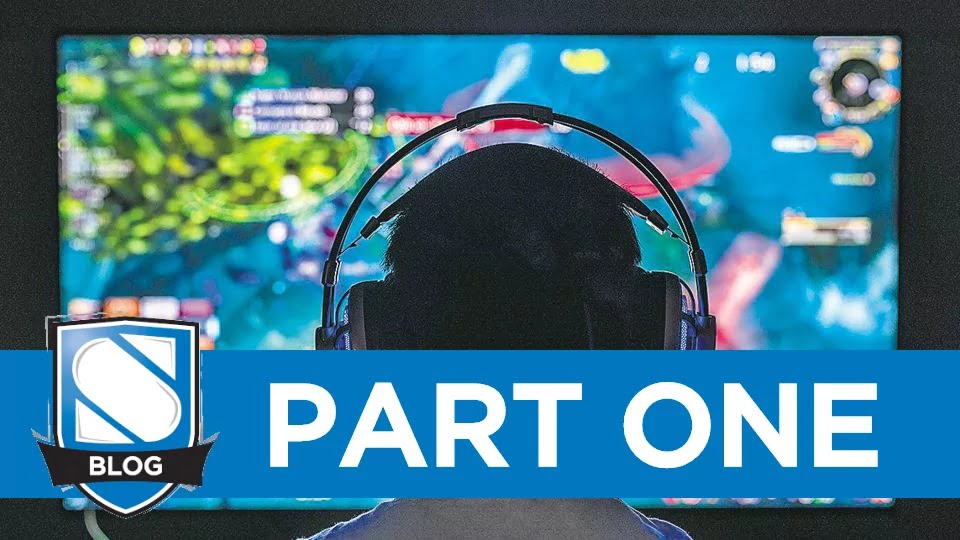This is Part One of a Two Part Series on the Dangers of Online Gaming
Video games are the single most popular entertainment medium in the world. For parents today, the question isn’t “do your kids play games?” It’s “which games do your kids play?” And as the industry moves towards multiplayer titles, that answer is going to include more and more online games.
There are many kinds of online games and it’s impossible to get into how each of them work, but the main point is they all involve playing with other real life players. When you see your child sitting on the couch with a controller in their hand, its easy to forget there are real people on the other end of the screen doing the exact same thing.
Without being alarmist, there is an element of risk there. While most online game interactions are either benign or positive, there is always the risk that your child could encounter a bully, a predator, or even a criminal.
If you haven’t kept up with gaming technology since the N64 and the days when “multiplayer” meant having a couple of friends over for a round of Goldeneye, it can be difficult to know what these dangers are. That’s why we’re going to be taking a close, realistic view of the potential dangers your child might face when playing online.
In-game and out-of-game dangers
One thing to understand when we talk about risks while online is that a hacker typically isn’t going to hack their victim through the game. A much more likely scenario would be your child getting tricked into giving someone personal information or access to an account that will be used outside of the game to defraud your family.
But that isn’t to say there are no dangers your child will encounter while playing. While at their best, online games serve as a way for kids to unwind, hone their teamwork and analytical skills, and connect with a broader social circle, they can also put them in contact with true scumbags. They can meet bullies and trolls that will run down their self-esteem, and while it is uncommon, it is possible to run into predators who will say inappropriate or offensive things, or in the most extreme cases, try and groom a child gamer as a potential victim.
It can be scary to think about these things as a parent. But for as troubling as some of these dangers may seem, the vast majority of them can be successfully fought with nothing more than sensible supervision, a few pragmatic precautions, and some firm ground rules for what your child can and can’t do online. The important thing is to identify them and develop a strategy for protecting your child so they can play safe. Today, lets look at some of the dangers you child might run into online.
In-game Dangers
Bullying and griefing
Sadly, this is by far the most common risk when playing online. Bullying and griefing in-game can often reflect bullying in real life. It can start with name calling and insults, and given the anonymous nature of the internet, even escalate to threats and more extreme language. This can get scary fast when it involves racial slurs, sexualized insults, or violent threats.
“Griefing” in this context is when someone intentionally goes out of their way to spoil the fun and enjoyment of another player and will generally go hand-in-hand with other types of harassment. This can involve a whole myriad of behavior depending on the game, from vocal harassment, intentional friendly-fire, being disruptive in a co-operative game or throwing matches in a team game – anything that can be done to frustrate and annoy other players. Everyone who plays online will deal with this kind of behavior eventual. Where this escalates and becomes a risk is when a griefer follows a particular player from round to round or game to game to keep ruining their fun. When it isn’t just a random player with bad manners anymore, but a concentrated effort to make a specific player miserable.

What you can do about it?
This is going to depend on how old your child is and what games they are playing. If they are younger, the most effective way to protect them is to cut off the source of harassment – other players. If other players can’t communicate with your kids, they can’t bully them. You can accomplish this by either steering your kids towards games that don’t include voice chat (the popular virtual card game Hearthstonefor example only allows players to communicate through a selection of pre-written generic messages) or by managing the settings on the games that do include chat. Every modern console includes parental controls that can disable voice chat as do the majority of PC games.
Where this gets more complicated is when voice chat is a major draw of a game. Take Fortnitefor example, it’s a combat game sure, but it’s also a cultural touchstone and vehicle for shared experiences. For many youths in the 10-14 range, Fornite isn’t even about winning or losing, but hanging out with friends in a big virtual sandbox where they can crack jokes and do silly things. Take away voice chat and you might as well throw the game in the dumpster.
In this case, you need to prepare your child for how to respond to negative situations and make an effort to regularly supervise play sessions. Reinforce the idea that a game is just a game and if someone is being nasty online, the best thing to do is to walk away and either find another game to play, or take a break. Try moving the gaming console or computer into a shared family room so you can easily monitor what your child is hearing and saying back as they play and be ready to intervene in negative situations.
—
Problem purchasing
While we might worry about hackers and online thieves stealing access to the family credit card, a far more likely culprit might be your own child. Such is the lure of the in-game purchase.
Mobile games famously gate play (or at least effective play) behind resource systems that are only replenishable with either long periods of waiting, or small (but frequent) injections of cash. There are many heartbreaking stories of children (and adults) racking up massive credit card bills supporting a mobile game habit.
But problem spending isn’t limited to mobile titles. Many of the most popular console and PC games today (Overwatch, Fortnite, League of Legends, etc.) offer in-game purchases that can be irresistible to children. Sometimes these purchases come in the form of new characters, tools, or items that offer advantages or bonuses that are only available for real money. Other times they may offer cosmetic items that don’t provide any concrete advantage, but convey status and prestige to other players i.e. you might still lose, but you’ll look great doing it! :]
The most potentially harmful of these kinds of purchases are the so-called “loot box” gimmicks. These are games that don’t allow you to purchase a specific item or costume for your character, but a loot box that might contain the item you want. This is similar to a gumball machine, but instead of taking a quarter per turn, it might take anywhere from $2-$10 dollars a pop. The odds are heavily weighted towards filler and junk items requiring repeated attempts for a high-value piece. It’s basically a slot machine targeted at young gamers.
The comparison to gambling isn’t hyperbole. A recent study in the UK has found that child gambling has quadrupled in the past 2 years, and explicitly names loot boxes as a driving factor of this upswing. While nations such as Belgium, The Netherlands, and Japan have already begun regulating loot box practices, Canada has not, so it’s up to you to protect your child from problem spending.

What can you do about it?
Every parent who has ever walked their kid down a toy aisle knows that convincing a child they don’t need or really want an item is a losing battle. What you need to control is access to your funds.
Where the real trouble begins is when a credit card or bank account is saved to an account. If you’re into games yourself or make frequent purchases for your kids, it might be tempting to save your card info to your phone, Steam account, or PlayStation to avoid the hassle of having to put it in again and again. Unfortunately, this can make it very easy for your child to make purchases using the card info without you ever knowing it.
Fortunately, there are very easy ways to prevent this. Every major platform has parental and security controls you can use to prevent transactions without your consent. On the Xbox One you can set a passcode that must be entered every time a purchase is attempted. On the PlayStation 4 you can make a child account that will prevent purchases. On iOS you can set specific restrictions for purchasing in certain apps from the general settings options.
Take a few minutes to turn on these features and you’ll have eliminated one of the biggest dangers facing your child online.
Check back next week for Part Two where we’ll look at dangers that can follow your children outside of the game, and what you can do about them!














0 Comments